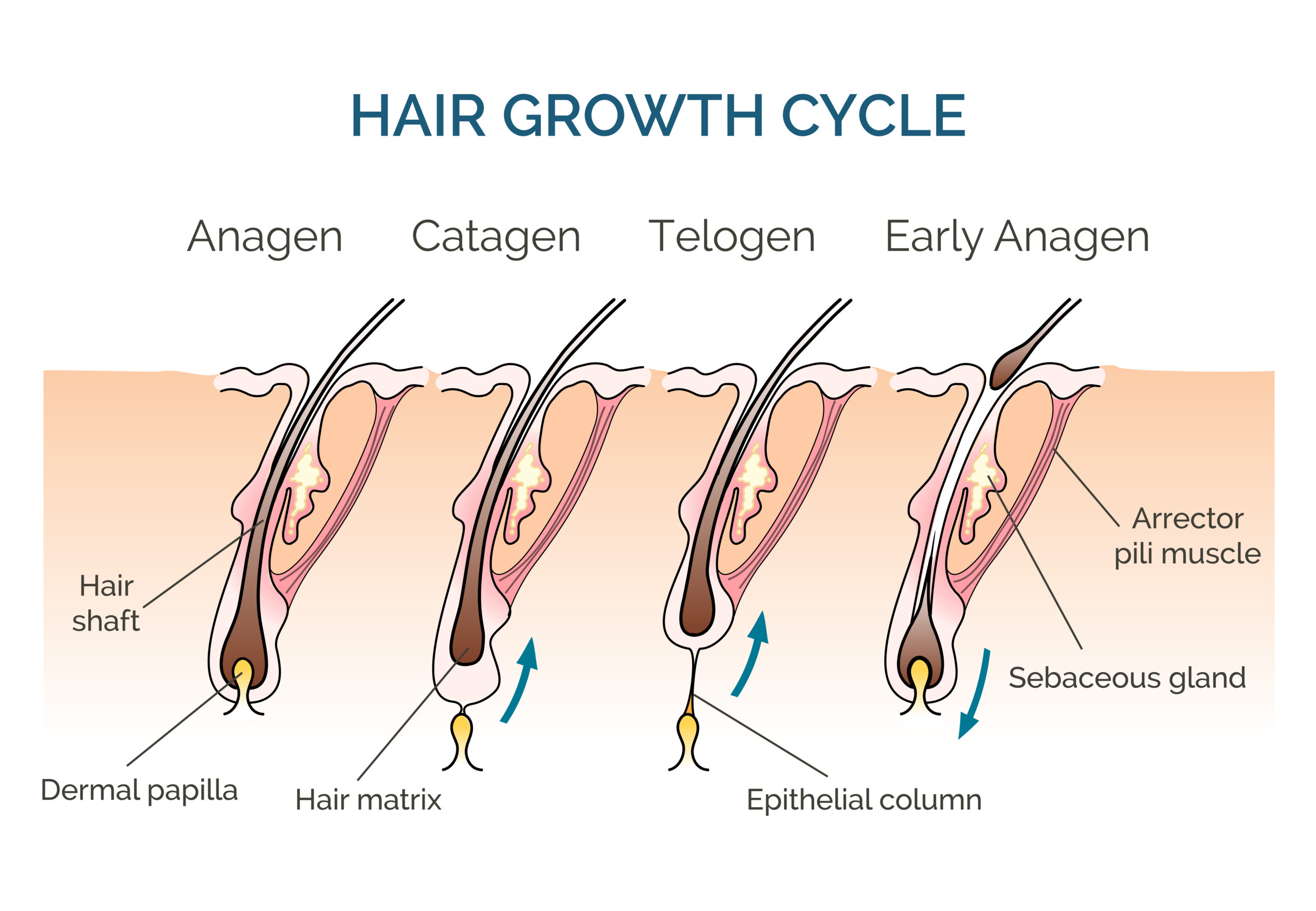Hair growth is personal. According to a recent study, hair follicles go through phases, namely anagen, catagen, and telogen. Understanding these stages will provide you with new insights that have advanced our current knowledge of these areas.
Stage #1: Anagen
The first phase is the anagen phase. It’s a chaotic period where hair cells divide rapidly. Due to this process, new strands are born. Interestingly, the duration of this phase may vary from person to person.
The process also differs for various body areas. For example, scalp hair boasts a longer anagen phase, contributing to volume and lushness.
Stage #2: Catagen
The next phase is a transitioning one. It’s when hair growth stops. After a brief period, the hair follicles shrink and detach from the dermal papilla. This marks the start of preparation for the upcoming stages.
This transformational period lasts for only a few weeks but plays a crucial role in the overall process of hair growth.
Stage #3: Telogen
Finally, the resting phase! The telogen phase signifies a time of hibernation; a period of dormancy. While the hair is fully formed, there is no active growth.
Approximately, 10-15% of your hairs are in a resting stage at all times. Once this phase is over, the whole process restarts, starting with the shedding of the old hair.
Harnessing Hair Growth Cycle – Insights!
Now that you know the four stages, you have a fair share of knowledge about how this works in a hair growth cycle. It holds significant relevance in treating hair disorders. Don’t get me wrong, but whenever you see the first symptom of hair-related disorders, you should seek professional help.
Also, consider factors like age, genetics, and other environmental influences. Stopping smoking (if you do) is a good idea!
Investing In Hair Wellness
Prepare yourself for the hair growth cycle. You can always explore more about hair patterns, the science behind your unique condition, and tailor the knowledge to your help.
As you invest in more options, consider investing in products and treatments aligned with the natural hair growth cycle.
Here are some tips for hair wellness:
Gentle Cleansing: Wash your hair regularly, but not too often. For example, if you have oily hair, daily washing might be necessary, but for dry hair, twice a week is sufficient.
Conditioning: Use sulphate-free and pH-balanced shampoo and conditioner. Apply conditioner to the lengths, avoiding direct application on the roots.
Heat Styling: Do a deep conditioning treatment followed by heat styling weekly. Keep the heat setting low to prevent damage.
Protective Styles: Opt for protective styles like braids, twists, and buns to prevent tangles and unnecessary breakage.
Diet: Stay hydrated and maintain a diet rich in protein, vitamins, and omega-3 fatty acids for healthy hair growth.
Manage Your Stress!
In today’s world, stress is more common than you think. Incorporating stress-reducing practices into your daily routine may help! Start your day with meditation, deep breathing exercises, yoga, or dynamic meditation.
Another factor that contributes to daily stress is adequate sleep. Ensure that you get sufficient and quality sleep; it also plays a role in managing hair growth.
In conclusion, the hair growth cycle is more than a scientific concept. Take it as a roadmap to healthy and vibrant hair. When you accept your hair better, you can make better-informed choices.







